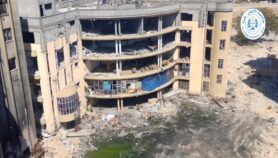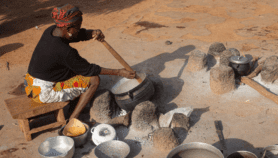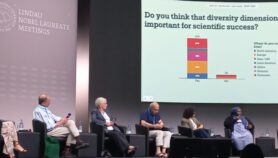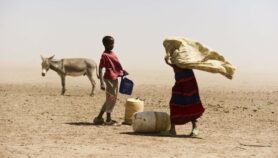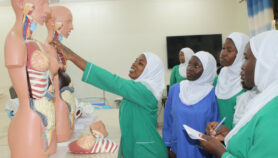30/12/23
Forensics in crisis over lack of data, resources
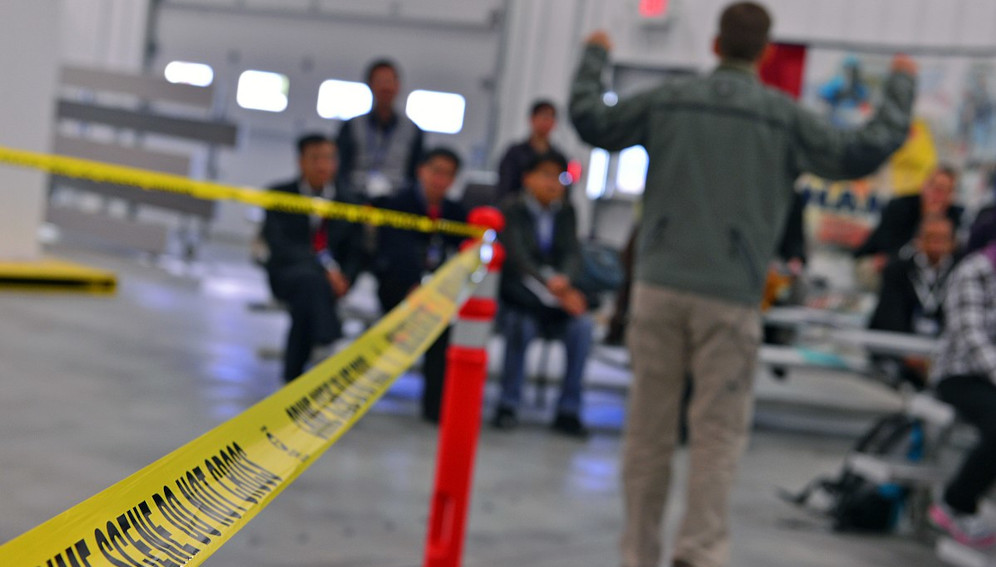
By: Joel Adriano
Send to a friend
The details you provide on this page will not be used to send unsolicited email, and will not be sold to a 3rd party. See privacy policy.
[MANILA] There was a big furore in the Philippines a few months back after a school student died, reportedly due to slapping by a school teacher during an exam.
The official death certificate showed that the 14-year-old Francis Jay Gumikib died of brain swelling. But local forensic expert, Raquel Fortun, later pointed out that the death certificate didn’t specify the actual cause of the brain haemorrhage.
Following an autopsy, the Philippine National Police (PNP) revealed that the student died of a rare congenital condition, and not due to the slapping. Gumikib suffered from an unusual twisting of arteries and veins known as arteriovenous malformation, and that one of the entangled veins ruptured, causing his brain to swell, leading to his death.
The family initially refused to accept the findings and insisted that their son’s death was caused by the teacher’s slapping. The teacher is also facing separate charges of violation of anti-child abuse law.
But after thoroughly explaining it to the bereaved parents, according to Police Major Sotero Rodrigo Junior, public information officer of the PNP Forensic Group, the family accepted the results and understood that there was no agenda behind the findings.
This case highlights the critical role of forensic science in finding out the truth, in dispensing justice based on scientific evidence, and in relaying this to the general public to allay doubts, especially in countries with weak leadership and justice systems.
Helping the vulnerable
Forensic science is the application of scientific methods and techniques in solving crimes. It is critical in the administration of justice – to avoid innocent people being wrongly convicted while criminals escape justice, and to give closure for those seeking justice.
It can involve scientists such as chemists, biologists, pathologists, doctors, dentists, psychologists, and computer experts, and covers techniques ranging from fingerprinting – first used to solve crime over 100 years ago – to modern technologies such as DNA analyses to solve crimes.
Maria Corazon De Ungria, a molecular biologist and who heads the DNA Analysis Laboratory at the Natural Sciences Research Institute, University of the Philippines Diliman, said the public must be made to understand that forensic science is there to protect the most vulnerable.
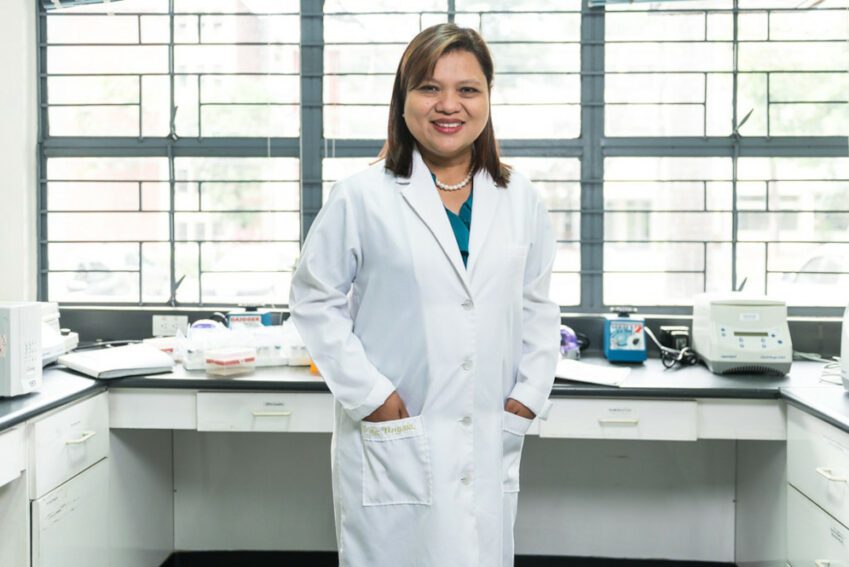
Maria Corazon de Ungria heads the DNA Analysis Laboratory at the University of the Philippines Diliman. Photo credit: Jinggo Montenejo.
“People who are economically disadvantaged have limited resources and are unfamiliar with the processes of our legal system,” De Ungria said.
What this means, explained Allan Hilbero, a regional trial court judge in the Philippines, is that even if the other party is well-to-do and can afford a very good private lawyer, scientific evidence is difficult to question, levelling the playing field in any court case.
“Science doesn’t compromise; the findings are exact,” explained Hilbero.
Moreover, forensics is intertwined with global commitments signed by countries including the 17 Sustainable Development Goals (SDGs).
In particular, SDG 16 – Peace, Justice and Strong Institutions – implies forensic science is essential in achieving sustainable development, according to an article published in the journal Forensic Science International: Synergy.
In the article, the authors point out: “The pursuit of justice is not only worthy in its own right, it is also crucial in eliminating violence against women and girls (SDG 5 – Achieve gender equality and empower all women and girls) and reducing inequality through provision of accurate evidence (SDG 10 – Reduce inequality within and among countries).”
Easing congestion
Yet legal cases in many developing countries could take years or even decades to resolve as courts are overloaded. In the Philippines, litigation cases take about four to seven years to finish, De Ungria said.
One judge in a study said she has 295 pending cases. With at least one case filed daily in their courts, it is difficult for judges to keep up with workloads as each one needs time to study, making it difficult “to proceed with the disposition of cases at a faster pace”.
The poor are unlikely to be able to bear lengthy trials due to their inability to earn income while in jail. Income loss is much harder for poor litigants, especially if they are the sole breadwinner, De Ungria said.
“Unlike those with resources, the poor could end up in prison while awaiting trial because of their inability to put up money for bail,” De Ungria said. “So, any delay in court resolutions is simply anti-poor.”
This is where forensics comes in.
“Forensic science helps in deloading courts with cases that can be avoided in going into trials like paternity cases,” said Hilbero, who added that a simple presentation of DNA evidence is conclusive enough.
“Science doesn’t compromise, the findings are exact.”
Allan Hilbero, a regional trial court judge in the Philippines.
Presentation of scientific evidence also helps speed up resolution of cases and address court congestion, unlike the traditional witnesses stand which takes a lot of time, he said.
“Forensics is science trying to help or contribute towards improving the [justice] system,” De Ungria emphasised.
Mass identification
Asia Pacific is the most disaster-prone region in the world, commonly dealing with earthquakes, volcanic eruptions, heatwaves and droughts, floods and tsunamis, and extremely powerful storms. On average some 43,000 people in Asia Pacific are killed in storms, floods and landslides each year, according to the United Nations Development Programme.
As such, forensics is very useful in mass disaster identification of recovered remains.
Nor Aidora Saedon, director of the Forensic DNA Division, Forensic Science Analysis Centre, Department of Chemistry Malaysia, explained the country’s DNA lab was established just over a year after the 1993 Highland Towers tragedy, where 48 people were killed when a tower block collapsed.
Forensics also became critically important in identifying thousands of casualties in Thailand following a tsunami on 26 December 2004. It played a crucial role in the identification of hundreds of victims in the Philippines after Typhoon Fengshen (locally named Typhoon Frank) in 2008, De Ungria added.
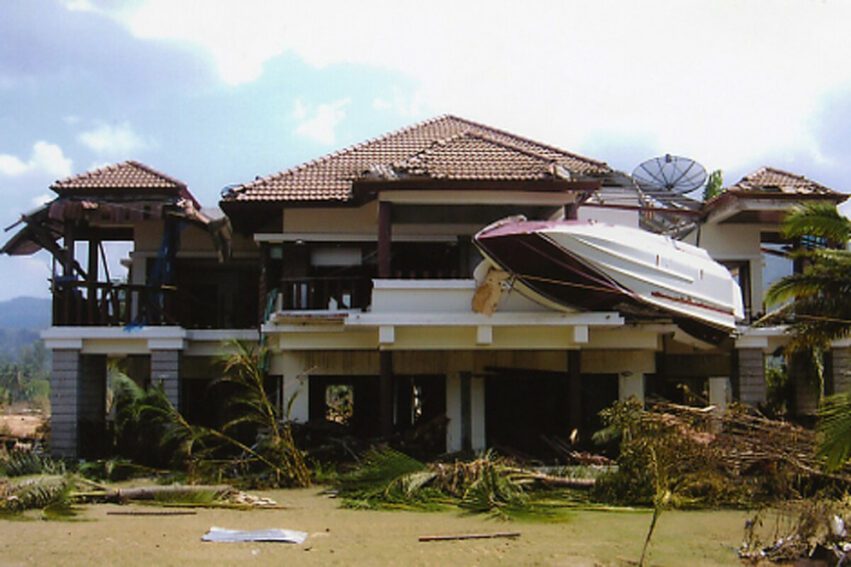


Forensic science also plays a key role in the aftermath of natural calamities, such as the tsunami that hit Thailand in 2004. Image credit: Khao Lak Ausflüge (CC BY-SA 4.0).
Then there are terrorist or conflict-related disasters.
From the downed Malaysia Airlines flight 17 that was struck in 2014 by a missile while cruising in eastern Ukraine, killing nearly 300 people on board, to the brazen election-related mass killing of 58 people in Maguindanao, Philippines, in 2009 which included 32 journalists, the world’s worst single-day murder of media workers, forensics is often vital in prosecuting the perpetrators.
However, De Ungria emphasised the need to come up with protocols concerning mass disaster identification to make the work efficient.
Disaster areas should be treated much like a crime scene. As such you need to have protocols in place, such as area restrictions to avoid contamination, coordinated recovery efforts across different government agencies and organisations, and evidence processing.
There are also questions surrounding the use of data or biological samples where privacy laws are in place.
“For example, you can’t simply use the biological samples gathered from new-born screening [where babies are checked for genetic conditions] outside of the parents’ original consent,” De Ungria said.
One option is to simply have the health department or ministry issue an ordinance to require hospitals to add a consent section in the new-born screening form to allow its use for human identification in disasters, said De Ungria.
Is forensics in crisis?
However, there are concerns that forensic science is in crisis and it is not progressing. Among the impediments to improvements in forensics is the “general resistance to change in the forensics community” itself as institutions and practitioners are conservative and are “used to doing things in a certain way”.
“Different agencies do forensic science with varying levels of appreciation of what science is,” De Ungria explained while pointing out that some might have fallen behind the times.
“For instance, our police still use the paraffin test which is no longer used globally,” she said, referring to an older test for gunpowder residues which has been replaced by chemical analysis.
In Pakistan, local policemen are not properly trained in systematic processing of crime scenes, particularly on collection of evidence, which may result in contamination of evidence, researchers say.
Science is advancing all the time, especially now in an increasingly digital age, which is why for older practitioners and others involved in the justice system, continuing training and education is an integral part of the work, De Ungria said.
“This is why agencies must invest in the development of personnel.”
In Malaysia, Saedon also emphasised the importance of collaboration to strengthen local forensic capabilities, such as through the contribution of organisations like the Asian Forensic Sciences Network.
Formed in 2008, the network’s aim is to have a platform for forensic experts in Asia to come together to discuss, share and advance forensic sciences. From an initial six institutes from six countries, it has now grown to 70-member institutes from 18 countries.
Another study described forensic science as “being in crisis” over the past two decades, which could undermine trust in justice systems.
Part of the problem is the availability and quality of data, particularly in many developing countries in the Asia Pacific region, especially in rural areas.
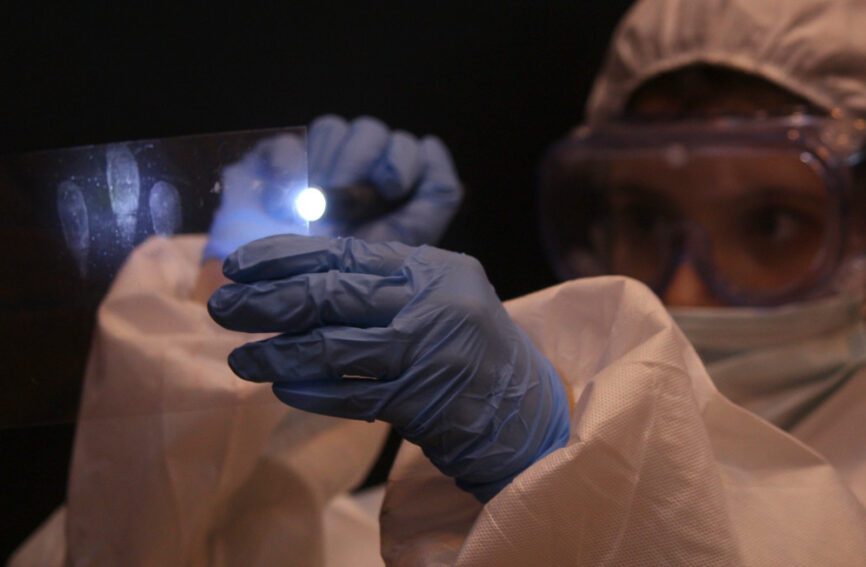


Data limitations make it difficult to take advantage of modern technology such as artificial intelligence. Image credit: WorldSkills UK (CC BY 2.0).
This lack of data makes it impossible to take advantage, for instance, of advancements in artificial intelligence, which is especially useful in its ability to process large amounts of data quickly from fingerprints to facial technology, leading to quicker resolutions of cases.
Also, machine learning algorithms are less prone to human errors, misses and biases, leading to improvements in overall accuracy and reliability.
In addition, forensics suffers from a piecemeal approach where different parts of forensic science are distributed between law enforcement, forensic services and the courts.
Professor Ruth Morgan, writing for University College London news, said that the fragmentation of forensics “has led to a situation where the value of forensic science has not been effectively articulated or appreciated, which in turn has led to a situation where forensic science has not been a strategic priority”.
Not independent enough?
Another serious concern which could undermine trust on forensics is independence.
In most Asian countries, forensics is part of the police bureaucracy and the prosecution arm of the state.
But putting the police in charge of forensics perpetuates the general belief of conflict of interest and inability of experts to fulfil their tasks without pressure, especially in countries where the police are known for their brutality, abuses, intimidation or being used generally as instruments to suppress opposition.
This is a problem for the Philippines where forensics is an organic part of the police organization, Hilbero said.
“It would be better if forensics are separate or independent,” he said.
With credibility and independence an issue with the police during the last administration under president Rodrigo Duterte, known for its drug wars, and police abuses continuing in the current administration led by Ferdinand ‘Bongbong’ Marcos Jr., one can’t fault people who will doubt forensic findings, commented a lawyer who asked not to be named due to a fear of losing job opportunities.
The public must have complete confidence in the criminal justice system; otherwise, people will not report crimes, he added.
However, in Malaysia, the set-up is similar to Singapore, where there is a clear separation and delineation of functions, Saedon explained.
“We are under the ministry of science, whereas the police are under the [department of] home affairs. Then separately you have the judiciary”, she said. “This makes it more impartial and the police can’t dictate to us.”
In the Philippines, some courts and parties have requested the conduct of forensic analyses in labs of independent academic institutions like the University of the Philippines (UP) which is not part of any law enforcement agencies.
“UP can work with law enforcement agencies in a forensic investigation, and we stand by the results of our analysis generated using validated scientific protocols, independent of the prosecution or defense agenda,” said De Ungria.
Shortages of staff
De Ungria said forensic science is facing shortages of experts and a lack of funds, particularly in handling forensic casework.
The DNA Analysis Laboratory in UP does not have funds to conduct actual casework. Hence, the high cost of DNA testing must be covered by either or both parties requesting the analysis, she explained.
While in the Philippines the number of forensic personnel has more than doubled from about 1,000 a decade ago to around 2,400 at present, this is still far from enough to service some 110 million people, Rodrigo explained.
One source with experience of police operations, who spoke on condition of anonymity, said they knew of someone who was handling over 200 cases.
Forensic chemists are a particular problem, according to Hilbero, who said in Laguna province, where he is holding court, there are usually one or two chemists available in a province with 3.4 million people.
In Malaysia, they have some 300 forensic experts with around 100 based in the main headquarters in Kuala Lumpur.
“Ideally, one person should only receive 10 to 20 cases per month,” Saedon said. “At the moment in Malaysia, experts handle about 30 cases per month.”
The situation can be time-consuming with forensic experts often called on in court to provide testimony, explain their findings, and help the court understand the importance of their evidence.
Respect from peers
Forensic scientists have long complained that their work is not always valued by their scientific colleagues because of its applied nature.
“As scientist and educator, I see the need to strengthen the link of forensic science with the larger scientific community and broaden the dialogue,” De Ungria said.
She emphasised that scientists can have a key role in solving crimes while also extolling the value of service, especially to students and young forensic scientists.
“The quality of governance in any country is gauged by the way that the country watches the most vulnerable members,” she said.
*This article was edited on 30 December 2023 to include the photo of Maria Corazon De Ungria.
This piece was produced by SciDev.Net’s Asia & Pacific desk.


